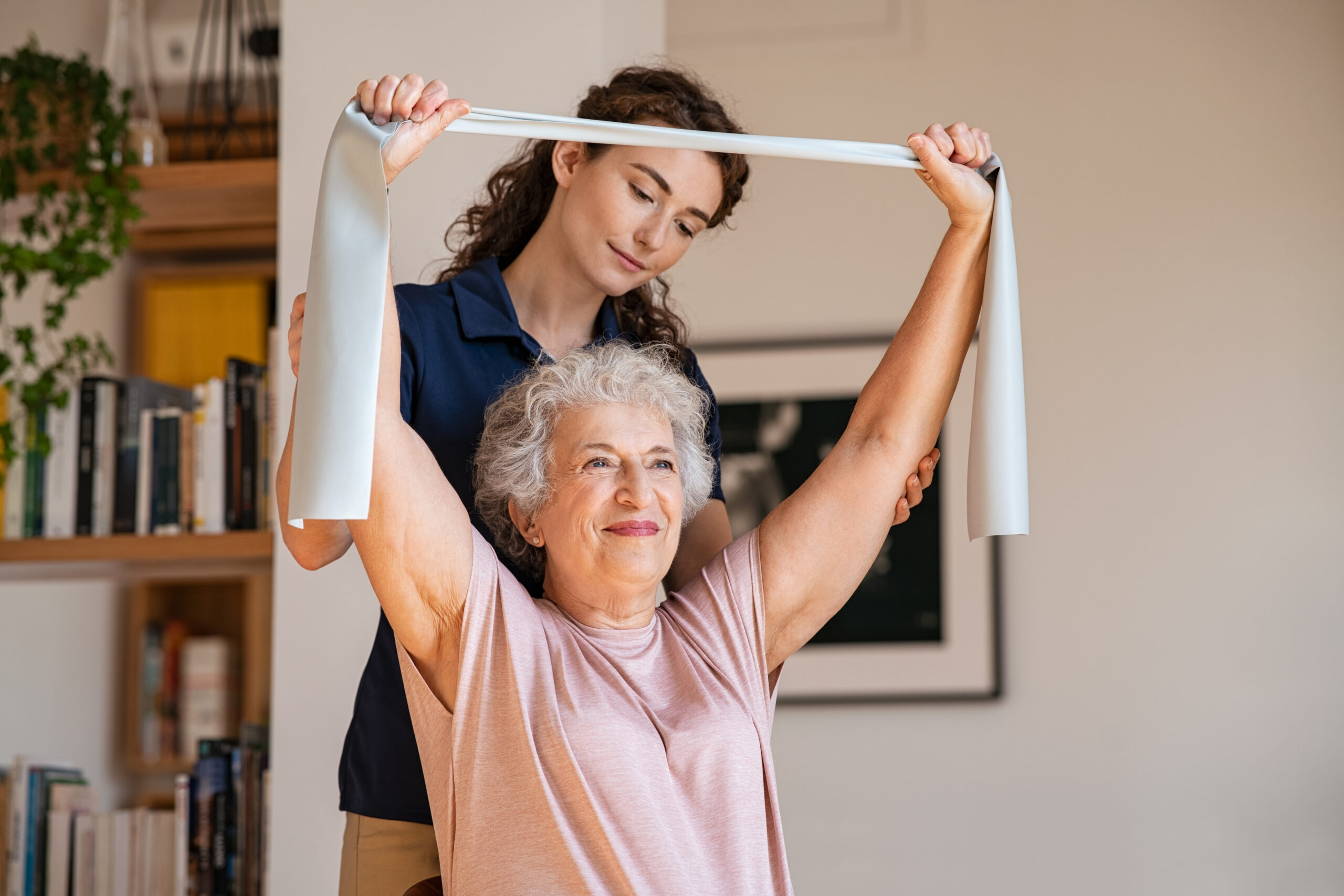Best Exercises for Seniors at Home
Introduction
Exercise is one of the most effective ways for seniors to maintain health, independence, and confidence at home. Regular movement helps reduce the risk of falls, strengthens muscles, improves balance, and boosts mood. The best part? Many exercises can be done right in the living room, without special equipment.
This guide walks through safe, practical exercises seniors can do at home—complete with step-by-step instructions. Whether the goal is improving strength, building balance, or staying flexible, these routines can help aging adults stay active and independent.
Gentle Warm-Ups
A short warm-up prepares the body, improves circulation, and reduces injury risk.
Marching in Place
- Stand tall with feet hip-width apart.
- Lift knees one at a time, as if marching.
- Swing arms gently with each step.
Do this for 1–2 minutes.
Shoulder Rolls
- Sit or stand upright.
- Slowly roll shoulders forward in a circular motion.
- Repeat backward.
Do 5–10 rolls each direction.
Ankle Circles
- Sit in a sturdy chair.
- Lift one foot slightly and rotate the ankle clockwise.
- Switch to counterclockwise.
Repeat 10 times each direction per foot.
Strength-Building Exercises
Strong muscles help seniors climb stairs, carry groceries, and get up from chairs.
Chair Squats
- Sit in a sturdy chair with feet flat on the floor.
- Cross arms over chest or place hands on thighs.
- Lean forward slightly and push through heels to stand.
- Slowly lower back to the chair.
Repeat 8–10 times.
Wall Push-Ups
- Stand facing a wall, arms extended, palms flat at shoulder height.
- Bend elbows and lean toward the wall.
- Push back to starting position.
Repeat 8–12 times.
Seated Bicep Curls
- Sit upright in a chair with light weights or water bottles.
- Start with arms at sides, palms facing up.
- Bend elbows to lift weights toward shoulders.
- Lower slowly.
Do 10–12 curls per arm.
According to the National Institute on Aging, strength training just twice a week can make everyday tasks easier and safer.
Balance and Stability
Balance exercises help prevent falls—the leading cause of injury among seniors.
Heel-to-Toe Walk
- Stand with arms at sides.
- Place heel of one foot directly in front of toes of the other.
- Take 10 steps forward slowly.
Repeat for 2–3 passes.
Standing Leg Lifts
- Stand behind a sturdy chair, holding the back for support.
- Slowly lift one leg to the side, keeping torso upright.
- Lower and repeat.
Do 8–10 lifts per leg.
Side-to-Side Steps
- Stand with feet hip-width apart.
- Step sideways to the right, then bring left foot to meet it.
- Step to the left and repeat.
Do 10–15 steps each way.
Flexibility and Stretching
Stretching maintains mobility, relieves stiffness, and supports independence.
Seated Hamstring Stretch
- Sit on the edge of a chair with one leg extended straight.
- Keep heel on the floor, toes pointing up.
- Lean forward slightly at the hips.
Hold 15–20 seconds per leg.
Overhead Arm Stretch
- Sit or stand tall.
- Raise one arm overhead and gently bend toward the opposite side.
- Switch sides.
Hold 15–20 seconds per side.
Neck Stretch
- Sit upright and relax shoulders.
- Tilt head toward one shoulder.
- Hold, then switch sides.
Hold 10–15 seconds per side.
Low-Impact Cardio
Cardio supports heart health and boosts endurance. Even light at-home options like step touch, seated marching, or dancing can make a difference.
Step Touch
- Stand tall, feet together.
- Step right, then bring left foot to meet it.
- Step left, then bring right foot to meet it.
Repeat 1–2 minutes.
Seated Marching
- Sit tall in a sturdy chair.
- Lift knees one at a time in a marching motion.
- Swing arms naturally.
Do for 1–2 minutes.
Dancing
Turn on favorite music and dance at a comfortable pace. This raises heart rate while lifting mood.
Joint-Friendly Excercise
For joint-friendly ways to stay active, see the Arthritis Foundation’s guidance on safe exercise ideas for older adults.
Sample At-Home Exercise Routine
For seniors looking for structure, here’s a simple 20–25 minute routine:
- Warm-up: March in place (2 minutes)
- Strength: Chair squats (10 reps), wall push-ups (10 reps), seated curls (10 reps each arm)
- Balance: Heel-to-toe walk (2 passes), standing leg lifts (8 reps each leg)
- Flexibility: Seated hamstring stretch (20 seconds each leg), arm stretches (20 seconds each side)
- Cardio: Step touch or seated marching (3–5 minutes)
- Cool down: Gentle deep breathing and shoulder rolls (2 minutes)
Safety Tips
-
Use sturdy chairs or counters for support.
-
Wear shoes with good grip.
-
Avoid slippery floors.
-
Stop if experiencing pain or dizziness.
-
Consult a doctor before starting any new exercise routine.
Conclusion
Exercise doesn’t have to be complicated to be effective. With simple at-home routines, seniors can improve strength, balance, flexibility, and overall well-being. Consistency is key—just a few minutes each day can build lasting benefits and help older adults maintain independence.
Want support in helping a loved one stay active and independent?
At Geriatric Resource Centre, we guide families with care strategies that encourage health, safety, and confidence at home.

